First Things First: When is the ETH merge happening?
Whether you hold ETH or are considering adding ETH in your investment portfolio, the ETH merge is a crucial moment for Ethereum’s development and its future valuation. The big day is on September 15, 2022.
So, without further ado, let’s dive into it.
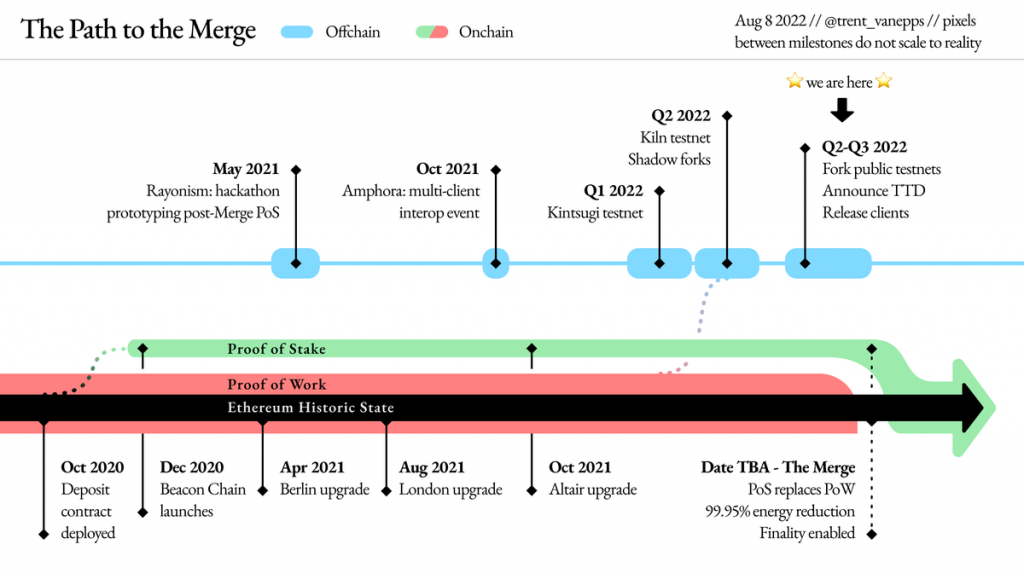
The Ethereum Network
For those of you who might not yet know it, Ethereum is the world’s second-largest decentralized network (second only to Bitcoin in terms of market capitalization). Ethereum’s network is open-source and it provides tools to build decentralized application on the blockchain using smart contracts. Smart contracts are digital contract templates that can be customized for a specific use (for example, to represent a financial product or a notarized deed).
Ether (ETH) is Ethereum’s native token used to pay transaction fees on the Ethereum network. Its market capitalization is $197 billion with ETH 122 million in the circulating supply. ETH is only second only to Bitcoin in terms of market capitalization, which is currently at $410 billion.
Below you can see the top 5 crypto currencies in terms of market capitalization as of August 2022. Check Coin Market Cap for updated information.
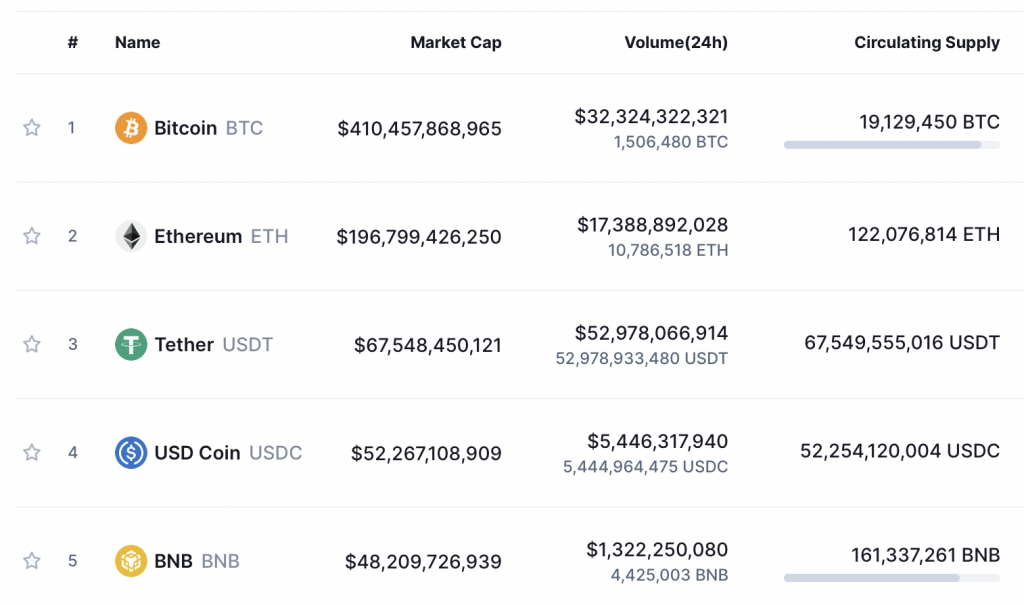
Fun fact: the top 5 crypto projects have a combined market capitalization of $ 775 billion.
That sounds like a lot. BUT. Let’s try to put this number in perspective.
Apple’s market capitalization as of August 2022 is a stunning $ 2,7 TRILLION.
This means that Apple ONLY is 3,5x bigger that the top 5 crypto projects COMBINED!
Let that sink in for a moment…
I believe the valuation of the entire crypto market is now $ 1 trillion. This means that Apple is still something like 2,7x bigger than the ENTIRE crypto market. Remember this when you fear you are late to the crypto party 😁
What Is The ETH Merge?
The ETH merge is a long-planned update of the Ethereum’s main network with big changes to the transaction approval mechanism, mining, decentralized app development, tokenomics, and ETH liquidity.
Ethereum’s main net will technically merge with something called the Beacon Chain. The Beacon Chain is the coordination mechanism of the new network. This mechanism is responsible for:
- creating new blocks,
- making sure those new blocks are valid, and
- rewarding validators with ETH for keeping the network secure.
Both chains exist in parallel. But for now, only the main Ethereum network is approving transactions through a consensus mechanism called Proof-of-Work. After the merge with the Beacon Chain, the main net will shift away from Proof-of-Work and instead adopt Beacon Chain’s Proof-of-Stake consensus mechanism.
What Is A Consensus Mechanism?
The consensus mechanism is the CORE of a decentralized network. This describes how the network governs itself, how it determines the legitimacy of the submitted transactions and how it approves transactions.
Right now (before-merge) Ethereum’s main net has a number of databases called nodes that run software to verify blocks of transactions. To reach Proof-of-Work consensus, the majority of nodes must agree on the transaction’s legitimacy and approval.
On a very high-level, this is how all decentralized networks operate. The safety of the network is guaranteed by the number of nodes validating the transaction. In other words, a fraudulent transaction might be approved by a compromised node. However, the likelihood that the majority of them will approve it is mathematically very low.
The Nakamoto Coefficient is a measure of how decentralized a network actually is. The coefficient indicates the number of nodes required to approve a transaction. Currently in the Bitcoin network, for example, a total of 7,349 validator nodes is required to approve a transaction. This is 51% of the total available validator nodes on the network.
Proof-of-Stake Explained
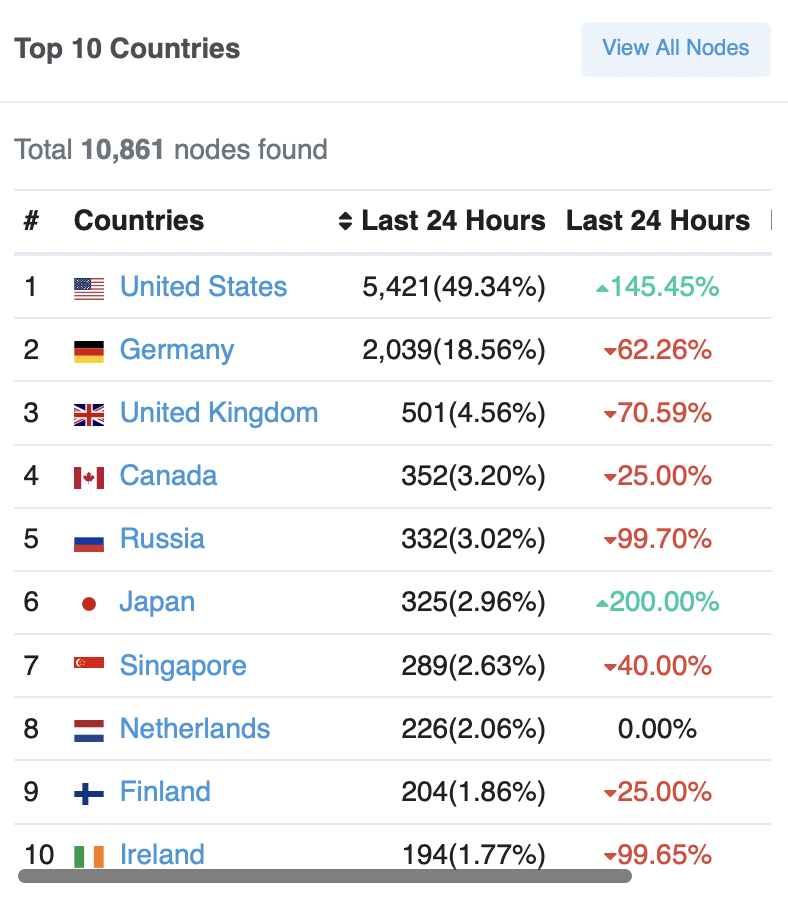
Why Is The ETH Merge So Important?
- Ethereum’s energy consumption will drop by 99.9% as a result of the ETH merge 😮
- The merge will reduce Ethereum’s circulating supply. This mean that ETH will become the largest deflationary currency in the crypto space. The amount of new ETH issued in the market is expected to drop by 87%. If Ethereum’s adoption and development continues growing, ETH has a chance to outgrow BTC in terms of market capitalization by the next halving event in May 2024.
- For now the ETH merge will not improve the transaction speed at all. But the merge is a fundamental step to further develop the main net and reach the target processing speed of 100,000 transaction per second!
My Concerns
- There are rumors of a number of big projects not supporting the ETH merge on the account that the switch to Proof-of-Stake will make the network less decentralized and thus less secure. This might cause a fork in the network with the rebel projects still running on the old Proof-of-Work consensus mechanism! Biggest spokesperson of this movement is ETH Classic, with founder Chandler Guo tweeting: “I forked Ethereum once, I can fork it again”.
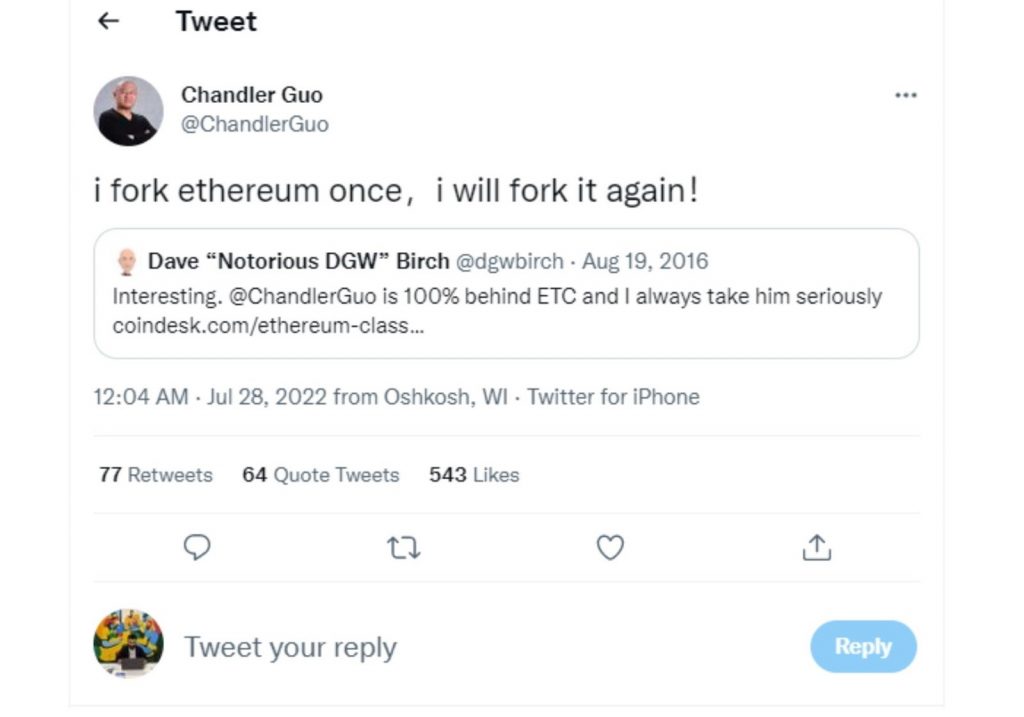
- There is a concern that with a Proof-of-Stake consensus it is easier to perform a 51% attack, with validators conspiring to approve fraudulent transactions. This is because the network requires a limited set of nodes to approve a given transaction. But personally I think this is not a big concern given that 1) each validator would lose their staked ETH in case of a fraud, 2) the snapshot of the transaction will be approved to the main net for transparency which would make a fraudulent transaction immediately visible to the rest of the nodes.
- There is for now NO gas fee reduction. This might be a big problem for adoption and volume. With ETH becoming deflationary, less ETH will be issued a miners rewards, which makes it more likely that we might see an increase in gas fees in the near term! On the long run, I do expect a significant reduction as low as $0.002 – $ 0.05 depending on the network volume. But not until ETH can solve its speed problem.
Should I Do Anything If I Hold ETH?
Nope.
And, quoting the Ethereum Foundation:
“As a user or holder of ETH or any other digital asset on Ethereum, as well as non-node-operating stakes, you do not need to do anything with your funds or wallet before the merge. Any funds held in your wallet before the merge will still be accessible after the merge. No action is required to upgrade on your part. As we approach the merge on the Ethereum main net, you should be on high alert for scams trying to take advantage of users during this transition.”
Conclusions
The ETH merge is the first step of a number of updates to Ethereum’s main network to make it faster, more scalable, and easier for the development community to launch decentralized applications. Read this article to get to know more about the world of decentralized applications.
Despite the short-term complications, I believe the Ethereum community is strong enough to carry forward with its plans and become the leading network for decentralized ecosystems. Under these assumptions, I expect ETH price to stabilize around $ 10,000 by 2025 with Ethereum at #1 in terms of market capitalization, surpassing BTC.
Newsletter
Stay up-to-date with the latest developments in the stock and crypto market., fund, and crypto market.
Disclosure
These are unqualified opinions, and this newsletter, is meant for informational purposes only. It is not meant to serve as investment advice. Please consult with your investment, tax, or legal advisor, and do your own research.
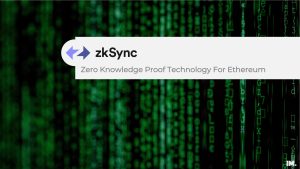


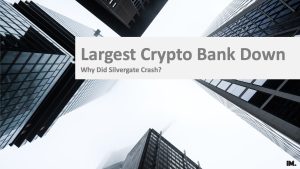
No comment yet, add your voice below!